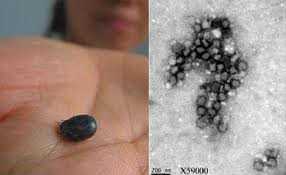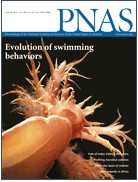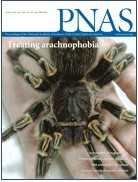PNAS:研究者揭示小鼠模型血小板减少综合症的致病机制
2012-07-03 T.Shen 生物谷
近日,国际著名杂志PNAS在线刊登了中国疾控中心和中国医学科学院研究人员的最新研究成果“Pathogenesis of emerging severe fever with thrombocytopenia syndrome virus in C57/BL6 mouse model”,文章中,研究者揭示了血小板减少综合症病毒在小鼠模型中引起严重发热的发病机制。 血小板减少综合症(SFTS)引发的

近日,国际著名杂志PNAS在线刊登了中国疾控中心和中国医学科学院研究人员的最新研究成果“Pathogenesis of emerging severe fever with thrombocytopenia syndrome virus in C57/BL6 mouse model”,文章中,研究者揭示了血小板减少综合症病毒在小鼠模型中引起严重发热的发病机制。
血小板减少综合症(SFTS)引发的剧烈发热是在中国发现的一种病毒性传染性疾病,这种疾病由布尼安病毒科的一种新的白蛉病毒(SFTSV)所引发。SFTS病毒的临床症状包括突然高烧、血小板减少、白血球减少以及胃肠道病症。实验室研究表明病人的血清谷丙转氨酶、谷草转氨酶、血尿素氮、乳酸脱氢酶等水平会升高,这些异常的机体水平改变为检验机体病理损害提供了证据。研究者关于SFTS病人的病理研究信息非常少,因为在中国偏远地区,病人在死亡后很少将器官捐献出来供研究用。因此,疾病和死亡的原因以及器官的病理改变目前并不知道。
在文章中,研究者Dexin Li在C57/BL6小鼠中建立了SFTS的感染模型,使小鼠模型产生血细胞减少和白细胞减少的标志性症状。在脾脏、肝脏和肾脏中均发现了RNA病毒以及组织病理学的改变,然而仅仅在脾脏中发现了病毒的复制情况,这就揭示了脾脏有可能是病毒复制的场所,而且在脾脏中,研究者也发现了巨噬细胞和血小板的数量有所增加,而且研究者表示SFTSV和血小板在巨噬细胞的细胞质中共存。体外实验中,研究者揭示了SFTSV可以吸附至小鼠的血小板上,并且协助推动小鼠巨噬细胞的吞噬作用,于此同时,这也就揭示了SFTSV所引发的血小板减少综合症是由于脾脏巨噬细胞吞噬病毒结合的血小板的清理作用所引发的。这项研究中,研究者阐明了和人类SFTS疾病类似的小鼠模型中血小板减少综合症的致病机制。

doi:10.1073/pnas.1120246109
PMC:
PMID:
Pathogenesis of emerging severe fever with thrombocytopenia syndrome virus in C57/BL6 mouse model
Cong Jina,1, Mifang Lianga,1, Junyu Ningb,1, Wen Gua, Hong Jiangc, Wei Wua, Fushun Zhanga, Chuan Lia, Quanfu Zhanga, Hua Zhuc, Ting Chenc, Ying Hana, Weilun Zhangc, Shuo Zhanga, Qin Wanga, Lina Suna, Qinzhi Liua, Jiandong Lia, Tao Wanga, Qiang Weic, Shiwen Wanga, Ying Dengb, Chuan Qinc, and Dexin Lia,2
The discovery of an emerging viral disease, severe fever with thrombocytopenia syndrome (SFTS), caused by SFTS virus (SFTSV), has prompted the need to understand pathogenesis of SFTSV. We are unique in establishing an infectious model of SFTS in C57/BL6 mice, resulting in hallmark symptoms of thrombocytopenia and leukocytopenia. Viral RNA and histopathological changes were identified in the spleen, liver, and kidney. However, viral replication was only found in the spleen, which suggested the spleen to be the principle target organ of SFTSV. Moreover, the number of macrophages and platelets were largely increased in the spleen, and SFTSV colocalized with platelets in cytoplasm of macrophages in the red pulp of the spleen. In vitro cellular assays further revealed that SFTSV adhered to mouse platelets and facilitated the phagocytosis of platelets by mouse primary macrophages, which in combination with in vivo findings, suggests that SFTSV-induced thrombocytopenia is caused by clearance of circulating virus-bound platelets by splenic macrophages. Thus, this study has elucidated the pathogenic mechanisms of thrombocytopenia in a mouse model resembling human SFTS disease.
本网站所有内容来源注明为“梅斯医学”或“MedSci原创”的文字、图片和音视频资料,版权均属于梅斯医学所有。非经授权,任何媒体、网站或个人不得转载,授权转载时须注明来源为“梅斯医学”。其它来源的文章系转载文章,或“梅斯号”自媒体发布的文章,仅系出于传递更多信息之目的,本站仅负责审核内容合规,其内容不代表本站立场,本站不负责内容的准确性和版权。如果存在侵权、或不希望被转载的媒体或个人可与我们联系,我们将立即进行删除处理。
在此留言














#致病机制#
71
#研究者#
74
#PNAS#
74
#血小板减少#
53
#小鼠模型#
73